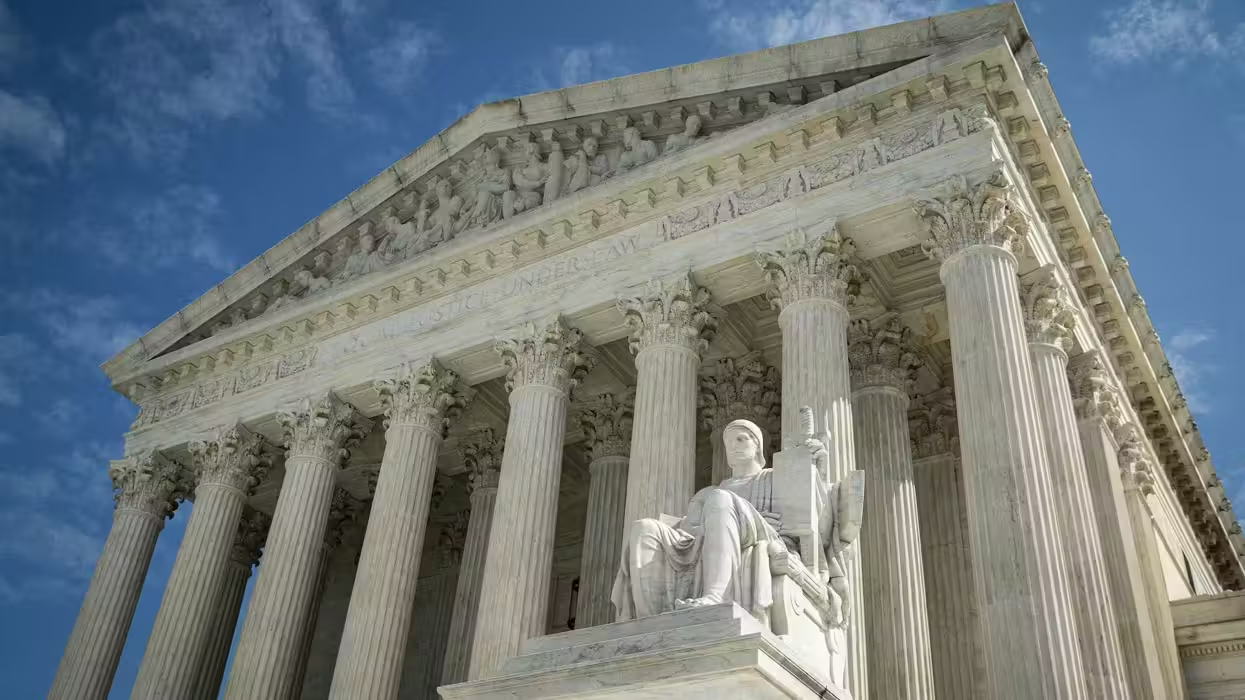
© 2025 Blaze Media LLC. All rights reserved.
" ... hyperinflation is not produced by central bankers. It is the result of a total failure of the political system."
[Author's note: Be sure to tune into TheBlaze TV at 5:00 p.m. EST to watch Glenn Beck discuss the topics below]:
Because Glenn Beck will be speaking on hyperinflation later tonight on his show, we’d thought it would be useful to give you all a quick primer on this fairly dense topic. Just what is hyperinflation, what causes it, and what does it mean for the U.S.?
First, to understand hyperinflation, one must first understand regular ol’ inflation. Inflation, in the simplest terms, is the rate at which the price of goods and services rise while the purchasing power of cash decreases. Basically, things become more expensive and your dollar isn’t worth what it used to be.
But what's hyperinflation?
Via Investopedia:
When associated with depressions, hyperinflation often occurs when there is a large increase in the money supply not supported by gross domestic product (GDP) growth, resulting in an imbalance in the supply and demand for the money. Left unchecked this causes prices to increase, as the currency loses its value.When associated with wars, hyperinflation often occurs when there is a loss of confidence in a currency's ability to maintain its value in the aftermath. Because of this, sellers demand a risk premium to accept the currency, and they do this by raising their prices.
One of the most famous examples of hyperinflation occurred in Germany between January 1922 and November 1923. By some estimates, the average price level increased by a factor of 20 billion, doubling every 28 hours.
Let’s see: A large increase in the money supply? Check. Slow GDP growth? Check. A miserable debt per capita rate? Check (via the Senate Budget Committee Republican staff under Ranking Member Jeff Sessions [R-Ala.]):
 "[T]he US [has] reached a Debt to GDP ratio of over 100%,” the independent investment research company Phoenix Capital Research writes for Zero Hedge.
"[T]he US [has] reached a Debt to GDP ratio of over 100%,” the independent investment research company Phoenix Capital Research writes for Zero Hedge.
“Indeed, at no point in history has the US had this much debt during peacetime. And the fact that we’re overspending by this amount at the exact time that other countries are showing signs of shunning US Treasuries is a formula for disaster,” the post adds.
Okay, so maybe there has been a massive increase in the supply of money and GDP growth has been less-than-stellar. Do we really need to worry about hyperinflation?
Writing for Financial Times, Tim Harford examines the history of hyperinflation:
First, hyperinflation is a phenomenon of the modern era: with a single exception, every hyperinflation has occurred since the end of the first world war. The outlier is revolutionary France, where monthly inflation passed 300 per cent in the summer of 1796.Second, three-quarters of these hyperinflations – 43 out of 56 – occurred in one of three clear historical clusters. The first cluster is central European states after the first world war. It provides the most famous hyperinflation in history: Weimar Germany. The second cluster is during or immediately after the second world war, and it includes history’s worst: Hungary in 1946. Those inflation rates defy comprehension – 41,900,000,000,000,000 per cent a month, compounded, is (I believe) an annual inflation rate with 178 digits. It makes more sense as 207 per cent a day.
The third cluster is that of Eastern bloc countries as the Soviet Union disintegrated, and it comprises over half of all the 20th century’s hyperinflations. These are all examples of hyperinflation going hand in hand with an extremely stressed political and social system. Most of the remaining examples, from Zimbabwe to late revolutionary France, exhibit that same stress.
Wait a minute. There’s a theme here. Quite simply, and as Harford notes, “hyperinflation is not produced by central bankers. It is the result of a total failure of the political system.”
He leaves on these parting words:
There are a few people who are simultaneously buying gold in expectation of hyperinflation in western economies and stockpiling bullets in anticipation of a calamity for western civilisation. I will give the survivalists this much credit: the scenarios are consistent. But calamity arrives first, and hyperinflation follows.
Now whether he is correct in his conclusion -- that calamity causes hyperinflation -- is debatable. What is not debatable, however, is the fact that the U.S. government continues to print money at a breakneck pace, economic growth is far from satisfactory, and that the U.S. is deep in debt:

Follow Becket Adams (@BecketAdams) on Twitter
This story has been updated for clarity.
Want to leave a tip?
We answer to you. Help keep our content free of advertisers and big tech censorship by leaving a tip today.
Want to join the conversation?
Already a subscriber?
more stories
Sign up for the Blaze newsletter
By signing up, you agree to our Privacy Policy and Terms of Use, and agree to receive content that may sometimes include advertisements. You may opt out at any time.
Related Content
© 2025 Blaze Media LLC. All rights reserved.
Get the stories that matter most delivered directly to your inbox.
By signing up, you agree to our Privacy Policy and Terms of Use, and agree to receive content that may sometimes include advertisements. You may opt out at any time.






